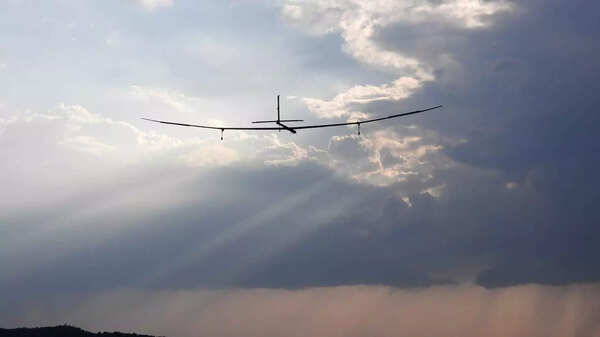BENGALURU: India’s indigenous high-altitude platform (HAP) project has completed another flight test campaign — crucial pre-monsoon flight tests with an upgraded certified autopilot system — of its subscale prototype developed by the National Aerospace Laboratories (NAL).The solar-powered stratospheric vehicle, which navigated through cloud cover during back-to-back test flights between May 8 and 13, holds the potential to boost India’s border security infrastructure and surveillance technology, once ready.The tests were carried out at the Aeronautical Test Range (ATR) in Challakere in Chitradurga, some 200km from the city. The HAP now utilises a certified sensor redundant control system hardware, enabling fully autonomous vehicle operation through custom control laws, navigation algorithms, and automated fail safes for all possible scenarios. In simpler terms, it now has a certified autopilot system.

“By developing proprietary systems rather than adopting the open-source approach common among UAV developers nationally and globally, NAL has joined the select few organisations worldwide pursuing certification—a critical requirement for integration into the national airspace system,” L Venkatakrishnan, programme director of HAP at NAL, told TOI. The recent tests demonstrated the platform’s capability to maintain flight even with reduced energy production due to cloud cover, with the vehicle successfully reaching altitudes of 24,000 feet (FL240 in aviation terminology).The subscale prototype, with a 12-metre wingspan weighing less than 22kg, has already achieved flight endurance of more than 8.5 hours at altitudes of almost 7km above mean sea level during tests conducted in May last year, using an open source auto-pilot system.Border patrolling The certified autopilot system, Venkatakrishnan said, is robust enough to enable completely autonomous flight without human intervention. “This is the same autopilot which will work on the full-scale vehicle we are building,” he said.

Though functioning as a testbed for aerodynamic design and subsystems intended for the full-scale model, the subscale HAP offers significant capabilities in its own right. “With a payload capacity of nearly 1kg and an operating altitude of up to 25,000 feet, it can patrol hundreds of miles of national borders that would otherwise require human presence. Additional applications include geoinformatics, meteorology, and crowd monitoring,” Venkatakrishnan said.The full-scale HAP will expand these capabilities, offering a 10kg payload capacity from 65,000 feet (20km) altitude with geographic persistence. IAF wants similar systemsIt’s noteworthy that the Indian Air Force (IAF), earlier this month, issued a Request for Information (RFI) for such High-Altitude Platform Systems. However, no comparable system has yet been deployed globally for military or other purposes. Given the unique weather challenges of the Indian subcontinent and strategic considerations regarding asset availability during emergencies, indigenous development is critical. However, procurement will depend on how quickly indigenous systems like the one NAL is developing can become available to the armed forces and how efficiently they work. NAL expects its full-scale HAP to be ready for flight testing by the first quarter of 2026.Beyond military applications, the platform shows promising civilian use cases. The Indian Institute of Tropical Meteorology, Pune, has expressed interest in using our HAP to deploy radiosondes for internal measurements of monsoon clouds, while telecommunications applications are also being explored. “We are already ready to carry a 5G base station because in terms of power and size-weight it can easily do that,” Venkatakrishnan said, highlighting the platform’s potential to serve as an aerial telecommunications relay.

